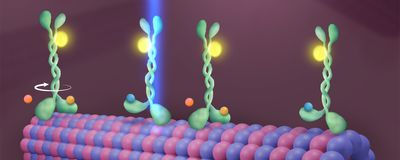Login
Subscribefluorescence
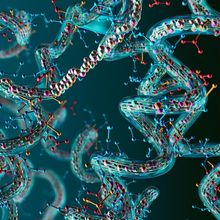
Now AI Can Be Used to Design New Proteins
Kamal Nahas, PhD | Mar 3, 2023 | 4 min read
Machine learning can be harnessed to synthesize artificial light-bearing enzymes that actually work in cells.
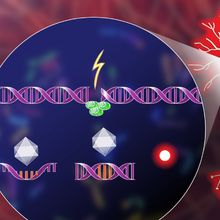
Infographic: DNA Damage Viewed with Unprecedented Clarity
Amanda Heidt | Aug 15, 2022 | 2 min read
A new genetic sensor called PRISM makes use of a host cell’s DNA replication machinery to trigger fluorescence in neurons with damaged DNA.
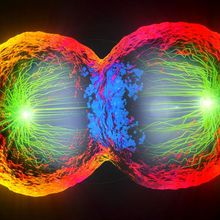
See Beyond the Scatter Plot with Imaging, Spectral Flow Cytometry
The Scientist’s Creative Services Team and BD Biosciences | 3 min read
A novel instrument combines fluorescence-activated cell sorting, imaging flow cytometry, and spectral flow cytometry to advance cell population examination.
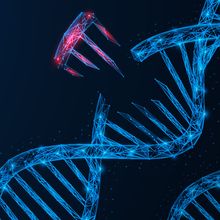
DNA Damage Viewed with Unprecedented Clarity
Amanda Heidt | Aug 15, 2022 | 3 min read
A new tool called PRISM draws on virus-host interactions and a DNA repair pathway to help researchers visualize how cellular stress may contribute to neurodegenerative disease.
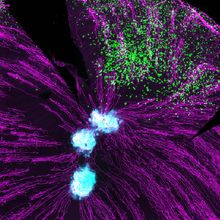
Science Snapshot: Eye Immunity
Lisa Winter | May 26, 2022 | 1 min read
Researchers find that tissue-resident memory T cells in the corneas of mice engender a lasting immune response.
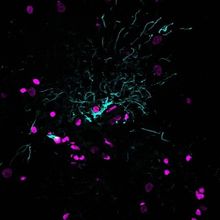
Stepping Out of the Background
The Scientist’s Creative Services Team and Biotium | 4 min read
New developments in non-specific fluorescence quenching offer researchers clearer pictures and more multiplexing possibilities.

Mouse Foraging Behavior Shaped by Opposite-Sex Parent’s Genes
Dan Robitzski | Apr 12, 2022 | 7 min read
A study in mice finds that for certain genes, one parent’s allele can dominate expression and shape behavior—and which parent’s allele does so varies throughout the body.
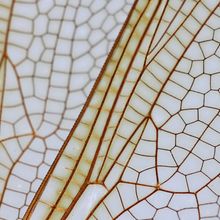
Unearthing the Evolutionary Origins of Insect Wings
Jef Akst | Apr 4, 2022 | 6 min read
A handful of new studies moves the needle toward a consensus on the long-disputed question of whether insect wings evolved from legs or from the body wall, but the devil is in the details.
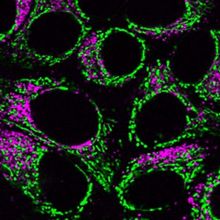
Choosing Fluorescent Reagents for Every Live Cell Application
The Scientist’s Creative Services Team and MilliporeSigma | 4 min read
Scientists gain unique insights into active biological processes with specific fluorescent probes, dyes, and biosensors.
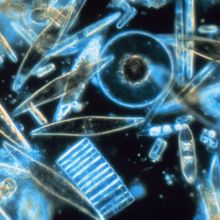
Q&A: Fluorescence Lets Diatoms Communicate, Coordinate Behavior
Dan Robitzski | Dec 16, 2021 | 6 min read
The Scientist spoke with physicist and microbial ecologist Idan Tuval, whose recent paper challenges the assumption that these single-celled organisms only communicate via chemical signals.

Ibrahim Cissé’s Tools Provide a Lens to Watch RNA Production
Jef Akst | Sep 1, 2020 | 3 min read
The MIT physicist has demonstrated the importance of clusters of RNA polymerase and other transcription mediators in regulating RNA production.
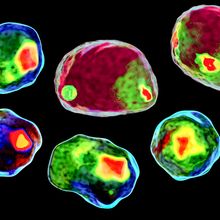
Adapting Flow Cytometry for Drug Discovery Workflows
The Scientist’s Creative Services Team and Bio-Rad Laboratories | 1 min read
Explore how flow cytometry innovations expand and accelerate cell profiling.

Image of the Day: An Infectious Glow
Carolyn Wilke | Mar 7, 2019 | 1 min read
In CRISPRed fruit flies that lack certain antimicrobial peptides, bacterial infections flourish, as revealed by fluorescent markers.

Image of the Day: Hot Pink Squirrels
Carolyn Wilke | Feb 15, 2019 | 1 min read
Under UV light, flying squirrels give off a rosy glow.
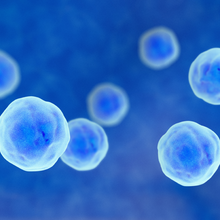
Technique Talk: An Improved Way to Detect CAR T Cells and SARS-CoV-2-Binding Cells
The Scientist’s Creative Services Team and Bio-Techne | 1 min read
Jody Bonnevier will discuss the advantages of Fluorokines™ for detecting and investigating CAR T cells and other key drivers of the immune system.

Image of the Day: Coral Fluorescence
Kerry Grens | Jan 22, 2019 | 1 min read
Green fluorescent protein lures algal symbionts to corals.

RNA Detection Tool Debate Flares Up at ACS Meeting
Katarina Zimmer | Sep 5, 2018 | 5 min read
Researchers have flagged several issues with so-called SmartFlares over the years, and it’s still unclear why they don’t appear to work under certain circumstances.
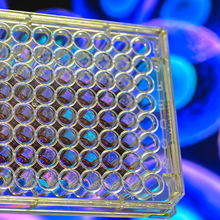
High-Throughput Solutions for Lead Candidate Discovery
The Scientist’s Creative Services Team and Thermo Fisher Scientific | 1 min read
New technologies allow researchers to scale up assays for cellular functions.

Drones Are Changing the Face of Ecology
Catherine Offord | Aug 1, 2018 | 6 min read
Unmanned aerial vehicles allow researchers to collect huge volumes of biological data cheaply, easily, and at higher resolution than ever before.
